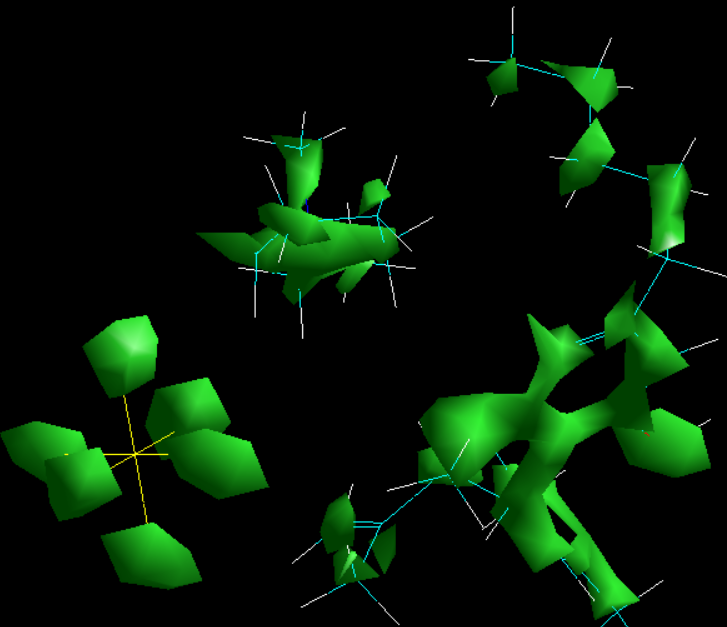Chemical Simulations

Computational Chemistry or Theoretical Chemistry is a relatively new scientific field that utilizes computational power, engineering principles and software development in order to provide predictions fast, accurately and cost effectively. Process simulation is a different field than Computational Chemistry. Process simulation deals with the design, test, control, optimization, operation and retrofitting of chemical plants. These topics include the desing, connection and optimization of a series of devices such as reactros, mixers, separators, tanks, and others.
Computational Chemistry tools offer a wide range of advantages when compared to traditional experimental approaches:
- They offer predictions for physical or chemical or electronic properties of compounds at very low fractions of time required in the laboratory; commonly result are taken after 1-2% of the estimated laboratory time
- They offer predictions at very low costs in comparison to traditional laboratory procedures, usually at around 10% of the laboratory costs
- They offer unique predictive potential for novel compounds
- They allow for formulation of tailor-designed compounds
- They allow for prediction of properties of compounds that have not been synthesized yet
- They allow for reactions investigation and modification
In layman’s words, one by using computational chemistry tools can:
- Develop a new separation membrane for gas industry separations
- Predict a new electronic material with enhanced electronic and mechanical properties
- Synthesize a new protective coating for furniture that is self cleaning, hydrophobic and scratch resistant
- Develop novel poison detectors for in door atmospheres
- Develop detectors for bugs, alcohol, meat proteins, and other analytes
- Identify reaction pathways for CO2 transformation into valuable products
- Design a new combustion chamber or fuel for cars
And virtually anything that one imagines, without employing tremendous resources for laboratory work!
Computational Chemistry simulations investigate the nature of atomic and molecular properties and interactions at atomistic and electronic level. All material properties [physical, chemical, electronic, thermodynamic] as well as reaction pathways are governed by the microstructure of each atom and molecule. These investigations can be carried out at various levels of accuracy:
- Ab Initio and Density Functional Theory [DFT]
- Semi empirical methods
- MM methods
Ab Initio methods solve the exact [or approximate] Schrodinger equation for each atom and require no empirical parameters. These attributes lead to experimental [and usually higher] accuracy at the expense of computational power and time. Computational power in this cases increases as N4 where N is the total number of atoms participating in the simulation. It is common that up to 100 atoms are usually used in a full ab initio simulation, depending on the actual computational power available. Some of the most important applications of Ab Initio calculations can be mentioned:
- Prediction of spectra
- Prediction of electronic properties
- Prediction of electrostatic interactions
- Predictions of electron charge distributions
- Predictions of reaction kinetics and thermodynamics
- Predictions of atomic and molecular properties
- Investigation of reaction pathways
Density Functional Theory is a different approach based on the theorem that electron density at a specific point in space is a known functional. DFT provides the same accuracy with Ab Initio methods [when the functional can be identified] at shorter computational times. The dependence of computational time on total atoms number is N3 thus allowing for a larger set of atoms to be included in the calculations. Applications are the same with Ab Initio methods.
Semi empirical methods provide extreme speed of calculations with good accuracy when the investigated systems are known. They use optimized parameters for species and chemical environments and thus their calculations are very fast. Their major disadvantage is that they cannot be reliable for studying new systems or environments; parameters have to exist or a great uncertainty exists. They cannot be used for monitoring of chemical reactions.
Similarly, MM methods are a category of computational chemistry methods that also requires parameter sets in order to reliably predict properties and systems evolution. Most MM methods use specific fields and interactions [such as electrostatic, vanDerWaals, 1-4, hydrogen bonding, etc]. They offer great speed of calculations and are ideal for monitoring physical processes. They can be used for monitoring of chemical reactions under specific conditions and considerations.
It becomes evident that the optimum choice of computational chemistry method depends on the understanding of the problem, the requirements, the deliverables and the nature of the investigation.
